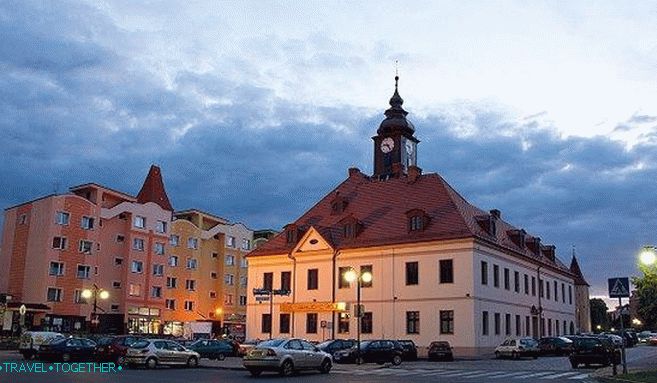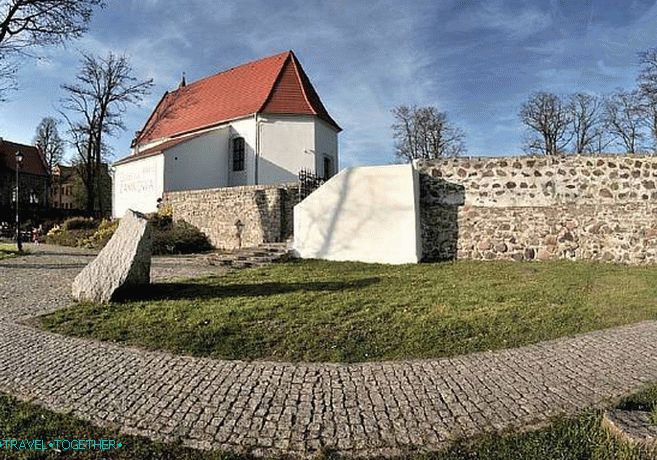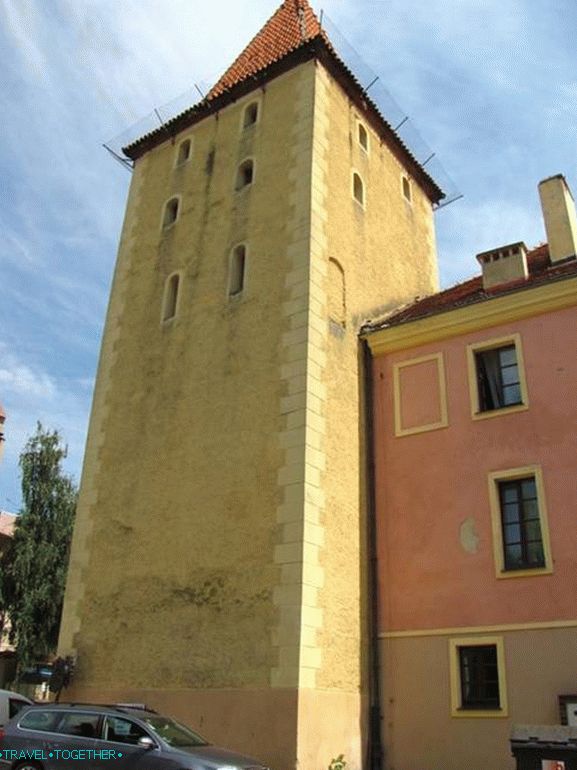Lubin, Poland – detailed information with photos. Sights of Lubin with a description. Location on map.
Lubin – an ancient city in Poland, located in the southwest countries in the historic region of Lower Silesia, included in Lower Silesian Voivodeship. Lublin spread along the banks of the river. Zimnitsa. The name of the city comes from the Polish word “lubić” (to love) and can be translated as a favorite city.
The first settlements on the site of the modern Lubin emerged on the intersection of medieval trade routes. The first mention of The city dates from the second half of the 12th century. The city was strong damaged in World War II.
Modern Lubin is a small developing city. Here is located the headquarters of a large industrial company – KGHM Polska Miedź.
Sights of Lubin
 Town hall
Town hall
Old Town Hall (Stary Ratusz) – Second City Hall half of the 18th century. Built in the architectural style of Baroque. Town hall was almost destroyed in 1945. In 1950 the town hall building restored. Now there are restaurants and a bank.
 Castle in Lubin
Castle in Lubin
Castle in Lubin (Zamek w Lubinie) – ruins medieval castle, which stood on a hill above the city.Lock It was built at the beginning of the 14th century as a fortification. WITH The southeast side of the castle grounds was the princely residence, in the opposite side there are farm buildings in the west a stone tower rose (built in the shape of a rectangle) – the most fortified construction point. In the southwestern part of the castle there was a chapel, the facade of which was associated with a defensive by the wall. The fortress wall was protected by a moat. Castle was destroyed in the middle of the 17th century. Only the outer walls, the tower, gate and chapel.
 Church of the Nativity Holy Mother of God
Church of the Nativity Holy Mother of God
Church of the Nativity of the Blessed Virgin (Kościół Narodzenia Najświętszej Marii Panny) – Catholic church with wooden frame. Built in the late 17th century, reconstructed in 2000
 Church of God Mothers
Church of God Mothers
Church of Our Lady (Kościół Matki Bożej Częstochowskiej) – Catholic Church, made in the Gothic style of brick. Construction of the church continued from the second half of the XIV to the beginning of the XVI century. The facade is decorated with stained glass.
 Remnants of serfs 14th century walls and Legnitz tower
Remnants of serfs 14th century walls and Legnitz tower
Lublin also has remnants of the old defensive buildings of the 14th century, including one tower, which protected the entrance to the city is called Legnica.






